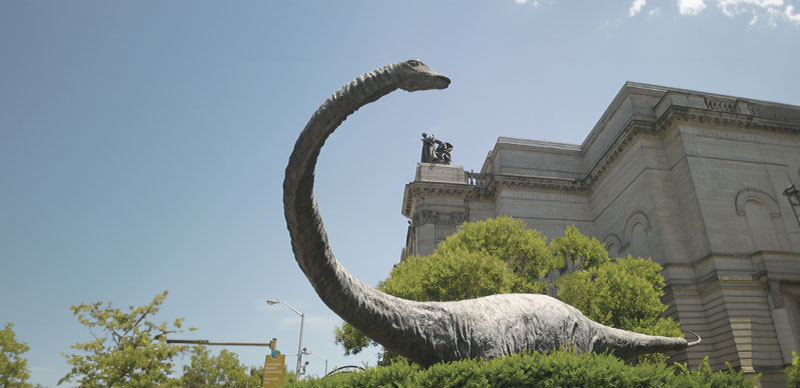The Art of Whale Watching
by Mark Wexler
John Seerey-Lester suspected his mind was playing
tricks on him. Traveling with a film crew in a boat off the coast of Maui,
the British-born wildlife painter heard the mournful song of a humpback
whale from atop the deck. “I never imagined you could hear a humpback above
the surface,” he says. “But when I realized the sound was actually resonating
up through the bottom of the boat, I knew it was for real.”
So did Al Giddings. The renowned underwater cinematographer immediately
lowered himself over the side of the boat along with some special camera
equipment, then dove in search of the singing male humpback. “I couldn’t
see him, but I could feel the vibrations of his song in my chest,” says
Giddings, who returned to the surface minutes later without capturing the
huge animal on film but nevertheless excited by the encounter. “It was
an experience,” adds Seerey-Lester, “that truly inspires.”
In an unusual alliance of artists from different mediums, Seerey-Lester
shared a boat for several days in Hawaii last winter with Giddings and
other filmmakers to pursue a common goal: to create works of art that help
promote whale conservation. For painter Seerey-Lester, the endeavor provided
an unparalleled opportunity to make field sketches for a portrait of humpbacks.
For cinematographer Giddings, it offered an equally unparalleled chance
to get close to the animals for a giant-screen film on the great whales,
which he codirected for National Wildlife Productions (NPW), NWF’s television
and film-production division.
Six years in the making and funded in part by a National Science Foundation
grant, Whales premiered in November 1996 in IMAX® and Omnimax®
theaters all over the world. “We’re concentrating on showing the behavior
and social interactions of the baleen whalesthe filter-feeding species
that are the largest of the great whales,” says Christopher . Palmer, president
of NWP and producer of the film. “In doing so, we’re letting these magnificent
animals speak for themselves in terms of why whale conservation is so important.”
In addition to their breeding grounds in Hawaii, humpbacks were filmed
at their summer feeding areas off Alaska. The film also includes never-before-seen
footage of endangered right whales of Patagonia and of the largest mammals
on Earth, 100-foot blue whales, swimming off California. The giant screen
format, which includes 60-foot-high screens in many theaters, “provides
viewers with eye-boggling images,” says Palmer. “It literally pulls you
right out of your seat and into the action.”
Every winter in Hawaii, the largest concentration of endangered humpback
whales in the North Pacific gathers to breed. The male humpbacks, which
grow as large as 50 feet and 45 tons, are best known for their songsperhaps
the most complex in the animal kingdom.
“When you swim up next to a singing whale, the song is so loud that
you feel as if someone is pressing you to a wall with their open palms,
shaking you until your teeth rattle,” says biologist Roger Payne, one of
the world’s leading whale experts and a science advisor to the NWP project.
These songs can last as long as 30 minutes and possibly function as a vocal
display by which a male attracts a female. In the waters off Maui, hundreds
of male humpbacks sing every year.
“Capturing whales on film is a creative challenge under any conditions,
but it was particularly difficult with the IMAX format,” says codirector
David Clark. Much of the responsibility fell on the shoulders of Giddings.
The nation’s foremost deep-sea filmmaker.
Because whales are spooked by bubbles, Giddings had to shoot all of
the underwater IMAX footage without scuba gear. That meant staying submerged
without breathing for several minutes at a time. (Giddings formerly held
the Guinness record for holding his breath nonstop underwater for 11 minutes.)
The difficulty of the task was compounded by the weight of an IMAX cameraabout
250 pounds including its waterproof case.
To maneuver the camera, Giddings added slight buoyancy to its underwater
housing and dived to depths of 70 feet. Then, when he could no longer hold
his breath, he released the camera and swam to the surface. Eventually,
the camera surfaced on its own. “It was a brilliant technique,” says Clark,
“that few people in the world could pull off.”
On board the film crew’s boat, Seerey-Lester spent a week making sketches
for a humpback painting. “I think all of uspainters, filmmakers, scientistsmust
continually work together to help increase the public’s awareness about
the great whales,” says the Florida-based artist.
Al Giddings agrees. “Our goal with this project is not to point fingers
at anyone regarding whales,” he says. “We want to let viewers make up their
minds about why whales are so much more valuable to us alive than dead.”
Mark Wexler is editor of National Wildlife magazine. This
article was reprinted from the October/November 1996 issue of National
Wildlife.
Whales in Pittsburgh is sponsored by TRACO, whose president
and CEO, Bob Randall, notes that this film clearly demonstrates the importance
of nature conservation and the role humans must play to nuture the lives
of these magnificent creatures.



